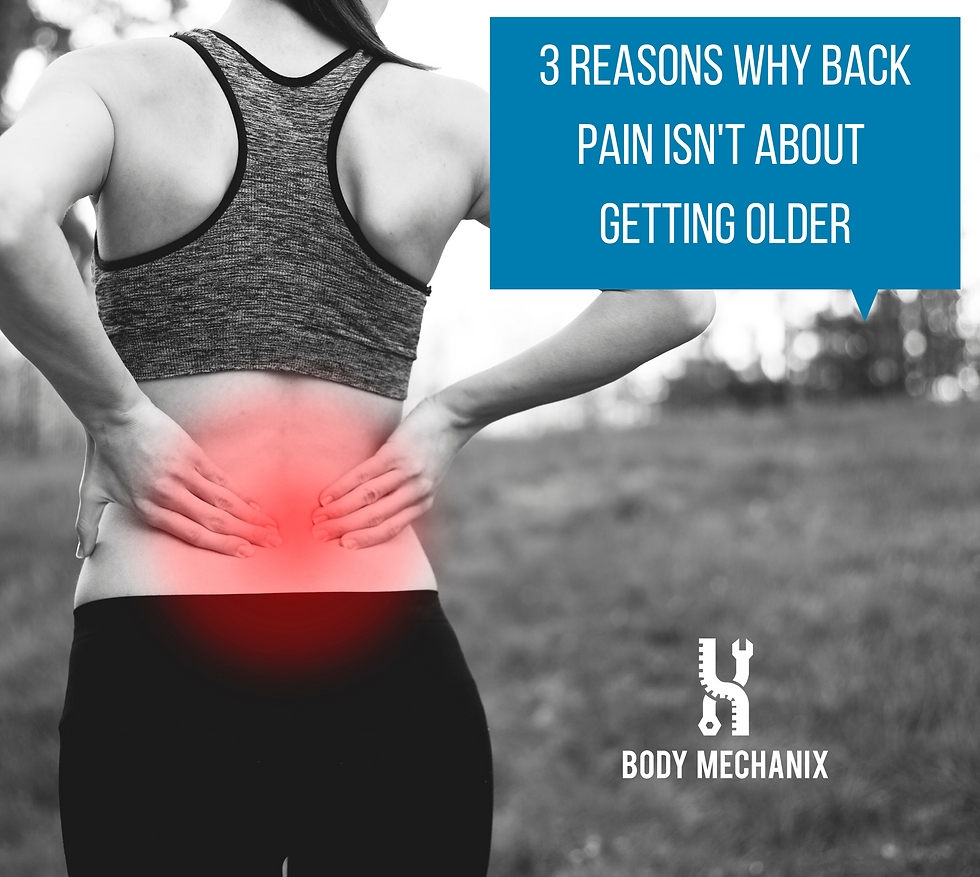Does your pain flare when a cold front comes through? 3 Ways to find Natural Relief
- Dr. Brandon
- Jan 3
- 6 min read

Growing up, you probably heard your grandparents talking about how their knees get stiff or their back hurts when the weather changes and if you’re like many, you probably wrote it off as an old wives’ tale or even thought that it will never happen to you. But as the seasons change, you might notice your shoulder stiffening up, your headaches coming back, or your joints aching and you are wondering what YOU did to injure them. It gets so bad for some people that they even notice their joints aching when a thunderstorm rolls through(and definitely noticed their old injuries during our past hurricane season). So, why does this happen and what can you do about it.
Starting with the why: First, pain is super complex, it is never as simple as the amount of damage equals the amount of pain. Why is that you might ask? First, we need to talk a bit about how pain works.
Over the last 25ish years of research, we’ve learned that our body’s alarm system is really complex. We used to think that there was a part of the body telling us that it was in pain. But now we understand that we have things called nociceptors or for our purposes, danger detectors, that let us know that a body part might be in danger, think of touching a hot burner or kicking the coffee table in the middle of the night. Now-we might not have damaged our toe but by hitting it against the table, the hit was intense enough to wake up our alarm system and motivate us to check it out. For some, they have a broken toe while for others, just a painful reminder that coffee tables win every time against toes. Now, normally we don’t talk about our chronically stubbed toe. The alarm system calms back down and life goes on. Now, let's just say that we maybe had a neck injury 5 years ago. The good news is that our spine heals. The bad news is that we can still have pain years on after it has healed. Why? Because after any injury, our alarm system can stay extra protective. Moreover, it has sensors for several things. It has sensors for pressure, blood flow, movement, temperature change, stress, and if your immune system is fighting off germs. Any one of those sensors is enough to wake up your alarm system. This is why stressful days can kick off a headache or make pain worse or why all your old injuries seem to flare when you have the flu. Now, after the danger detector (nociceptor) is activated, those nociceptors send that signal to the spinal cord for further processing. You can think of the spinal cord as a switch board operator(or spam filter for those under 45) who can decide to send the signal on up to the brain(or your inbox) or can even decide to leave that nociceptive signal at the spinal cord. Meaning the brain doesn’t get the message that there is potential danger. It's like the Boss telling her secretary that she doesn’t want to be interrupted during a meeting, or she knows who is calling and knows from past experience that the message is not important so “Please hold all calls”. The spinal cord works like this assistant and can work to turn up the signal or turn it down. Let’s say the signal gets sent on up to the brain/boss. Here is where the magic happens. You get to make a subconscious decision of how important that information is. You essentially ask “Is there really a threat here?”. If you think there is a threat then pain will likely emerge. But none of this occurs consciously. What we’ve learned is that pain is multidimensional. Meaning a huge number of things go into making that decision. Nociception is just one part.
Now, back to the person who has had neck pain for 5 years. Your alarm system starts to treat all information as dangerous and really important. So the spinal cord doesn’t stop any of the info and so now normally not dangerous things like cold, pressure, or a winter illness now can trigger pain(remember those danger detectors have sensors for those things). You can imagine this like a cup. If this cup is a picture of all of the things we can deal with before we have pain(i.e. Things filling it up), and if in the filling the cup overflows, that overflow is where we experience pain. Now, since those other sensors(temperature change, pressure, immune system, stress) can “pour” into the cup and fill it, it makes sense that there should be strategies for stopping the filling or even taking stuff out of the cup. That’s where the strategies below come in. These are your recovery strategies and while any 1 of them can improve things, using all 3 is where the magic happens allowing you to overcome your pain.
3 things you can do to ease flares during the winter
One of the easiest ways to ease flares or even prevent them when a cold front is imminent(or coming through) is to get out in front of it using heat. This can come in the form of a soak, hot shower, or hot pack. But, don’t stop there, then we want to “insulate” ourselves from the temperature changes that wake up our alarm system. This means layers and for those with neck pain or headaches, layers that cover our neck like a scarf. While it may sound obvious, this is actually one of the easiest ways to start to reduce the irritation to wherever we hurt. But this doesn’t work by itself.
Take Movement Breaks. Now here is where you start to work on understanding how your pain behaves. Lets say that you are good sitting for 30 minutes to an hour. After that time, you start to notice your pain start to grow. Maybe you’re stuck at your desk, maybe you’re traveling, or having to do daily chores that routinely aggravate your injury. Whatever it is that provokes your pain, note what position you feel best in. Take time BEFORE your pain increases to the point where you can not ignore it and move or stretch yourself to the position where you feel your best and stay there/move there for a couple of minutes. Then you can get back to what you were doing before. If you know you’re going to be stuck somewhere, do this BEFORE getting stuck there(like in a meeting) so you can “buy” yourself some extra time. Now, I know this might be impractical for some, but this is only part of our strategy.
Get to the cause of it. Now as a Physio, I’m always looking for what movement and practical strategy helps you start to heal yourself. More often than not there will be 1 to 2 movements that you can do(often with no equipment or even at your desk) that start to “empty” the cup that we talked about earlier. Sometimes when all positions or movements hurt, gentle, hands on bodywork is needed to put out the fire allowing you to start to treat it yourself. If you notice that getting a massage or adjustment helps but you always end up back where you started, combining those strategies with the self healing exercises I talked about above is often the key to let you start to heal yourself and not have you having to rely on someone else just to get by.
As always, thank you for reading this post. Confused about where to start? Book a call from the comfort of your home or office and on your schedule with one of our Back Pain and Sciatica Specialists. You can schedule your call here. Need help now? Come by and talk with one of our Doctors of Physical Therapy at no charge. We offer FREE consultations, which give you the opportunity to come in and meet us and see for yourself how we can help you.
Here are just a few of the things you will learn in one of our free consultation:
What is the underlying cause of your pain? (hopefully nothing too serious!)
Roughly, how long will it take to fix the problem?
What to do to help – which doesn’t include painkillers, resting or surgery etc.
What other, natural, drug free methods are there to speed up recovery alongside treatment?
Our consultations are great for anyone that may be “unsure” if physio is right for them, and they give you the opportunity to ask questions and see for yourself if we can help you.
If you’d like one of our limited free consultation sessions, please click here to schedule your free consultation or CALL us on 850-765-2779 to make a no-obligation enquiry.
About the Author

Dr. Brandon is the owner and a Physio at Body Mechanix Physiotherapy and Fitness. Four of his favorite people call him daddy while he's been married to his other favorite person for 20 years. He enjoys teaching martial arts and is a Mestrando in Capoeira while in the mornings, he can be found working out with the guys in F3 around town. He's the author of 4 pain relief guides for sciatica, low back, shoulder, and knees and the lead contributor to the Active Tallahassee Blog.







Comments